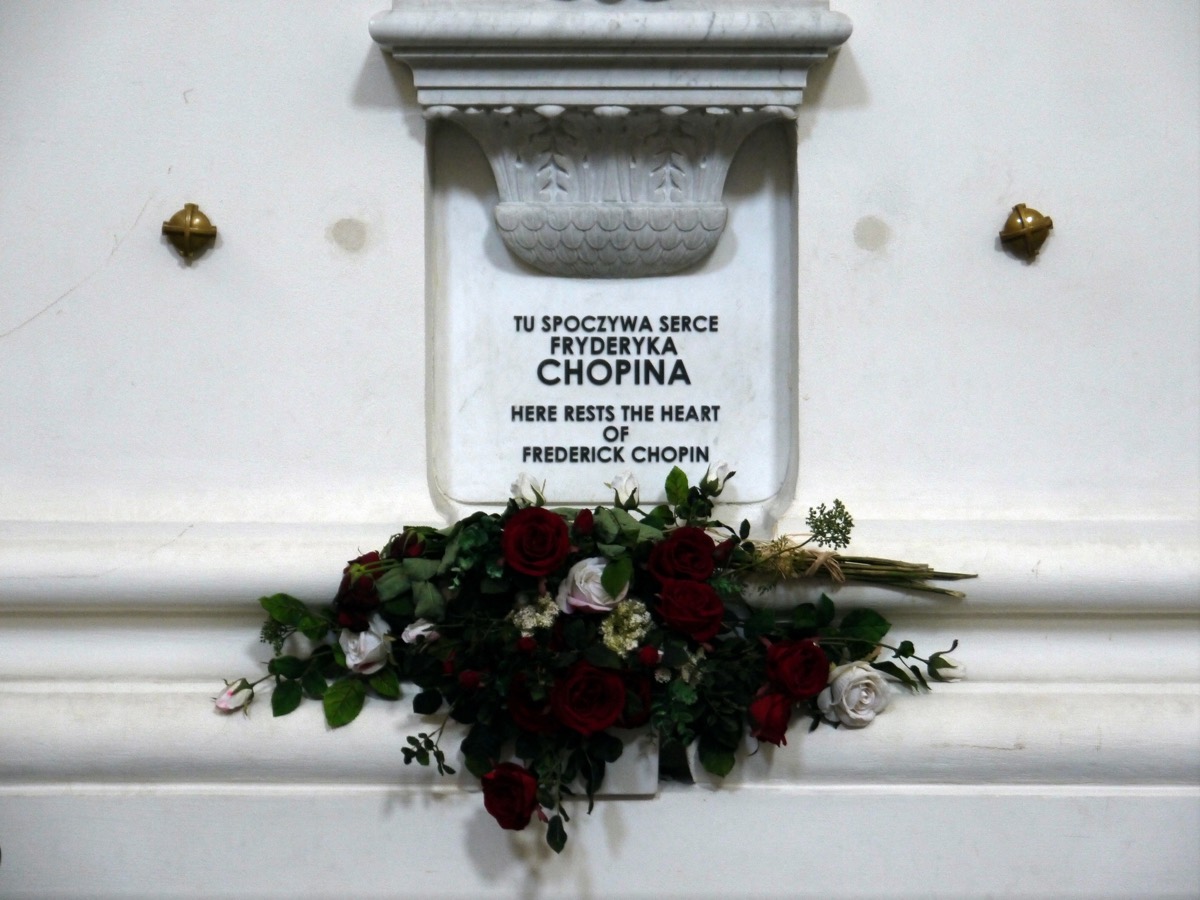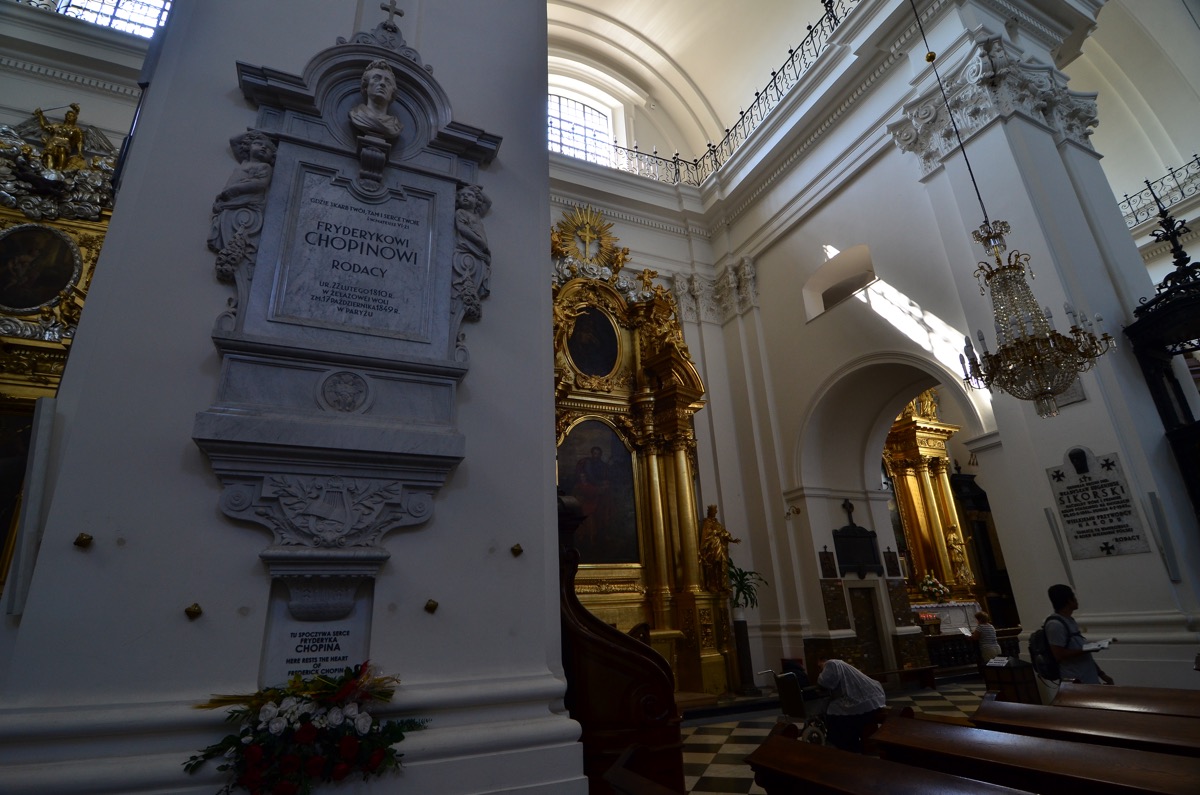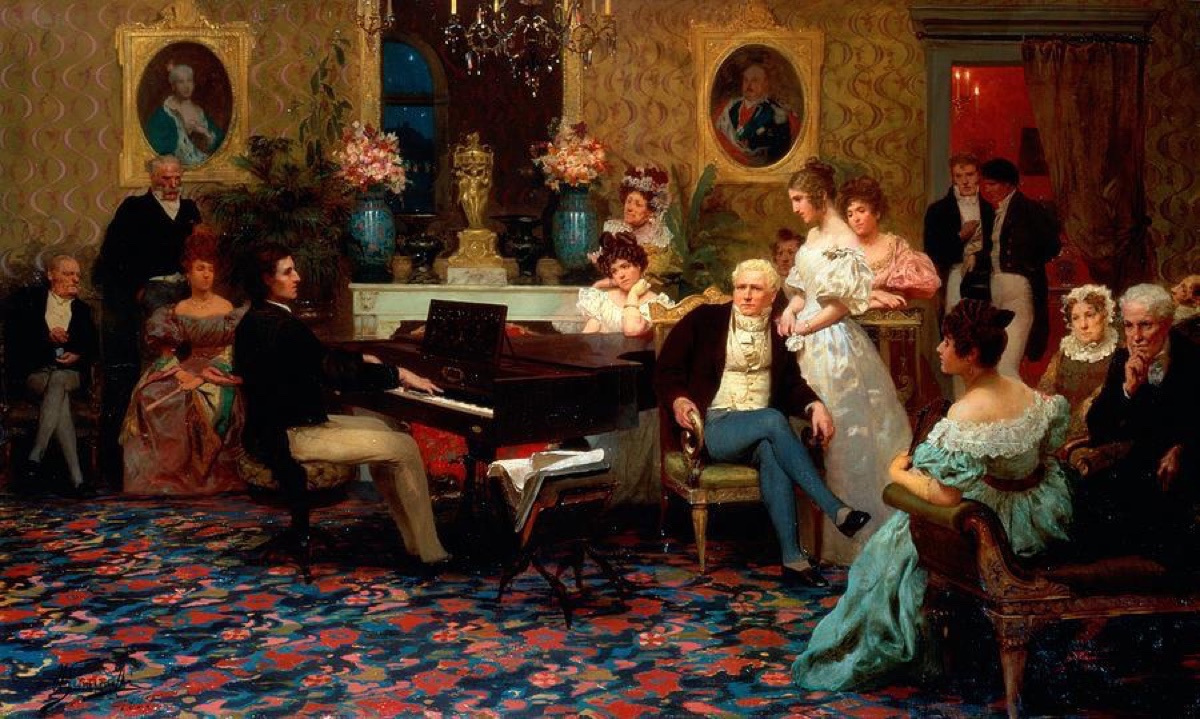Chopin's Pickled Heart Reveals Cause of His Death

Polish composer Frédéric Chopin has had a strange afterlife.
He died and was buried in Paris in 1849. But in a romantic gesture to his homeland, his heart was put in a glass jar and smuggled into Warsaw, then under the rule of Imperial Russia. Strangely enough, the Nazis allowed Chopin's heart to be put in safekeeping during the Warsaw Uprising. And since 1945, it has remained in a crypt at the Holy Cross Church in Warsaw like a holy relic.
After that, Chopin's pickled heart was mostly left to rest in peace until one night in 2014, when a group of scientists got permission to briefly inspect the jar in the crypt, in an effort to determine the musician's cause of death. They've finally released the results of their study, concluding that Chopin most likely died of complications from tuberculosis.
Chopin's heart came to be preserved in the first place because he was afraid of being prematurely buried. His last recorded words were: "Swear to make them cut me open, so I won't be buried alive." [25 Grisly Archaeological Discoveries]

Such a fear, known as taphephobia, was rampant in the 18th and 19th centuries. Both Danish writer Hans Christian Andersen and Swedish chemist Alfred Nobel wanted their veins cut open to ensure they were dead before being buried, according to Mental Floss. George Washington, too, wanted his relatives to wait three days after his death before they put him in a vault, just in case. Safety coffins were also designed during this era with bells, emergency airways and other contraptions that would supposedly save you if you happened to wake up 6 feet underground.
Chopin's sister honored her brother's wishes. She had a doctor perform an autopsy on the composer's body after his death, and his heart was removed and preserved.
The records from that initial autopsy were lost. Some Chopin experts wanted to have the heart re-examined to investigate a cause of death for the composer, who was sick throughout much of his life with respiratory problems and died at age 39. Most have assumed he died of tuberculosis, his official cause of death, but some proposed he may have had another disease, like cystic fibrosis.
Sign up for the Live Science daily newsletter now
Get the world’s most fascinating discoveries delivered straight to your inbox.

Finally, a group that included priests and forensic scientists was allowed to open the crypt in secret one night in April 2014, according to the Associated Press.
They found the heart, enlarged and floppy, still submerged in amber-brown liquid, likely cognac, commonly used for tissue preservation in the 19th century. The group took hundreds of pictures so that they could perform a visual analysis of the organ.
The scientists, led by Michal Witt of the Institute of Human Genetics at the Polish Academy of Sciences, concluded that Chopin suffered from long-lasting tuberculosis and his immediate cause of death was pericarditis, or inflammation of the membrane around the heart. This condition is rare but it is "one of the most life-threatening complications of tuberculosis, with a high mortality rate," Witt and his colleagues wrote in a manuscript of their findings published online last month in The American Journal of Medicine.
It's not the first time that scientists have tried to explain Chopin's lifelong illnesses. In 2011, doctors in Spain revisited accounts of Chopin's hallucinations and proposed that he might have had epilepsy.
Original article on Live Science.











